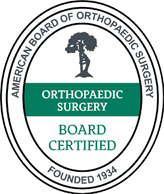Spine Center Atlanta is a state-of-the-art certified spine and orthopedic care treatment environment that includes an outpatient surgery center, MRI, physical therapy, and wellness center. We offer a wide range of advanced, cutting-edge services and provide patient-centered care oriented on restoring quality of life.
The practice proudly services multiple communities through offices in Atlanta, Savannah, Conyers, Augusta, Macon, and Decatur, Georgia.





Providing exceptional individualized healing for over 30 years through diversity, inclusivity, and integrity every step of the way.
| Monday: | 8:00 AM - 5:00 PM |
| Tuesday: | 8:00 AM - 5:00 PM |
| Wednesday: | 8:00 AM - 5:00 PM |
| Thursday: | 8:00 AM - 5:00 PM |
| Friday: | 8:00 AM - 5:00 PM |
| Saturday: | 10:00 AM - 3:00 PM |
| Sunday: | Closed |
| Monday: | 8:00 AM - 5:00 PM |
| Tuesday: | 8:00 AM - 5:00 PM |
| Wednesday: | 8:00 AM - 5:00 PM |
| Thursday: | 8:00 AM - 5:00 PM |
| Friday: | 8:00 AM - 5:00 PM |
| Saturday: | Closed |
| Sunday: | Closed |
| Monday: | 9:00 AM - 12:00 PM, 1:00 PM - 5:00 PM |
| Tuesday: | 9:00 AM - 12:00 PM, 1:00 PM - 5:00 PM |
| Wednesday: | 9:00 AM - 12:00 PM, 1:00 PM - 5:00 PM |
| Thursday: | 9:00 AM - 12:00 PM, 1:00 PM - 5:00 PM |
| Friday: | 9:00 AM - 12:00 PM, 1:00 PM - 5:00 PM |
| Saturday: | Closed |
| Sunday: | Closed |
| Monday: | 8:30 AM - 5:00 PM |
| Tuesday: | 8:30 AM - 5:00 PM |
| Wednesday: | 8:30 AM - 5:00 PM |
| Thursday: | 8:30 AM - 5:00 PM |
| Friday: | Closed |
| Saturday: | Closed |
| Sunday: | Closed |
| Monday: | Closed |
| Tuesday: | 8:30 AM - 4:00 PM |
| Wednesday: | Closed |
| Thursday: | 8:30 AM - 4:00 PM |
| Friday: | Closed |
| Saturday: | Closed |
| Sunday: | Closed |
| Monday: | Closed |
| Tuesday: | Closed |
| Wednesday: | Closed |
| Thursday: | 9:00 AM - 3:00 PM |
| Friday: | Closed |
| Saturday: | Closed |
| Sunday: | Closed |
Locations Through Georgia
Specialists Working For You
Years Combined
Improved Lives